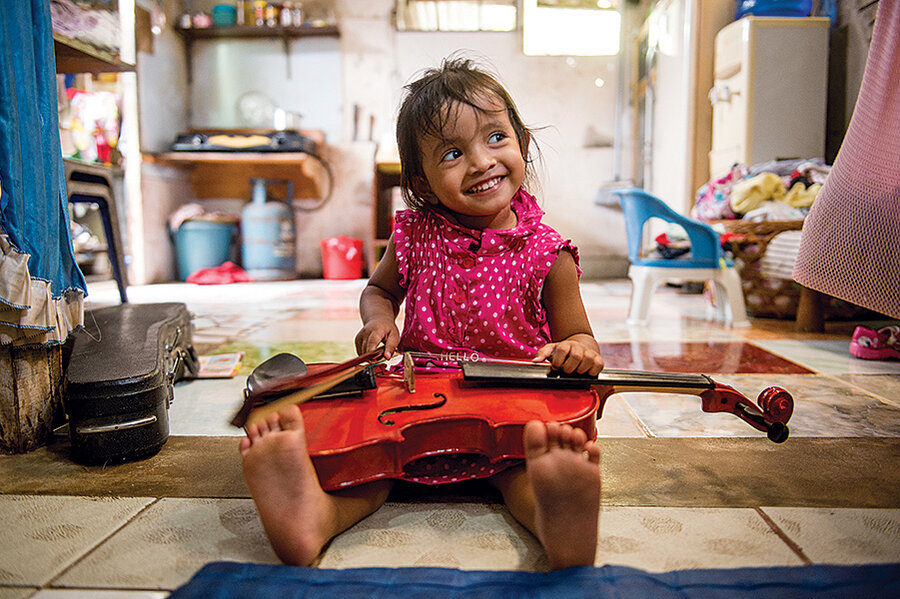Tsunami aftermath: The drive to move forward
Loading...
We meet them during the most trying times of their lives. We call them victims, survivors, refugees. Their faces personalize a disaster, their stories show us how humans deal with the huge and unexpected – a hurricane, earthquake, fire, or flood that engulfs a community and scatters families. Their accounts of the startling moment their everyday lives were upended, where they hid, how they clawed their way out, what they lost, and why they wept prompt us to rethink what we know about safety, survival, and our capacity for compassion.
The Southeast Asian tsunami of 2004 riveted the world and generated a record outpouring of charitable aid. One reason was the sheer scale of the disaster: Coastal communities throughout the Indian Ocean basin were overpowered by giant waves. The time of year undoubtedly played a part, too. The great surge struck the day after Christmas, when families are close, news is slow, and charity is in the air.
The Monitor immediately dispatched journalists. They interviewed survivors and tracked relief efforts, concentrating on the hard-hit Indonesian province of Aceh. A year later, correspondent Scott Baldauf and photographer Andy Nelson checked in on the survivors. Aceh was not quite on its feet, but rebuilding was under way. At the two-year mark, Andy and correspondent Simon Montlake visited, this time documenting a significant leap forward.
Eight years have passed since then. In a Monitor cover story (click here to read it), Simon, who is now the Monitor’s deputy international editor, and photographer Ann Hermes track down people you might remember: Mr. Alamsyah, Muam-mar Ma’aruf, and their families. Their lives and those of millions affected by that disaster haven’t followed straight lines. Humans, after all, are not data points. They make choices and then make new ones. They try something and change their minds. They adapt and seize opportunities. You’ll see that in Simon’s report.
Some of the people of Aceh left, some returned, new ones arrived. Babies were born, parents died. Survivors developed skills, shifted careers, made new plans. “It’s not just one simple path from A to B to C,” says Simon. “You can’t assume life after a disaster is reset to zero.” In some cases, opportunity emerged. Communities built back better. In other cases, people defaulted to old preferences, opting to rebuild in danger zones, hoping that a tsunami never strikes the same place twice.
Rebuilding – for an individual or a community – is never easy. Rubble must be removed, lost friends mourned, despair conquered. The motivation to go forward must be harnessed. History is heavy with setbacks and tears. On a planet of 7 billion, the ground is likely again to heave, pain and hurt to recur. But history’s arc bends toward progress. “Per aspera ad astra” is a sentiment older than the Latin language and as true for individuals as for nations.
Although people are sometimes victims, lives are more than a moment. That’s why it is good journalistic practice to follow up on lives interrupted and hear laughter and hope in survivors’ voices. After adversity, the skies clear. The stars never left.
John Yemma is editor-at-large of the Monitor. He can be reached at yemma@csmonitor.com.








